A vertically oriented uniform rod of mass M and length l can rotate about its upper end. A horizontally flying bullet of mass m strikes the lower end of the rod and gets stuck in it as a result the rod swings through an angle α. Assuming that m<<M. find
a. the velocity of the flying bullet:
b. the moment change in the system bullet rod during the impact: what causes that change of momentum.
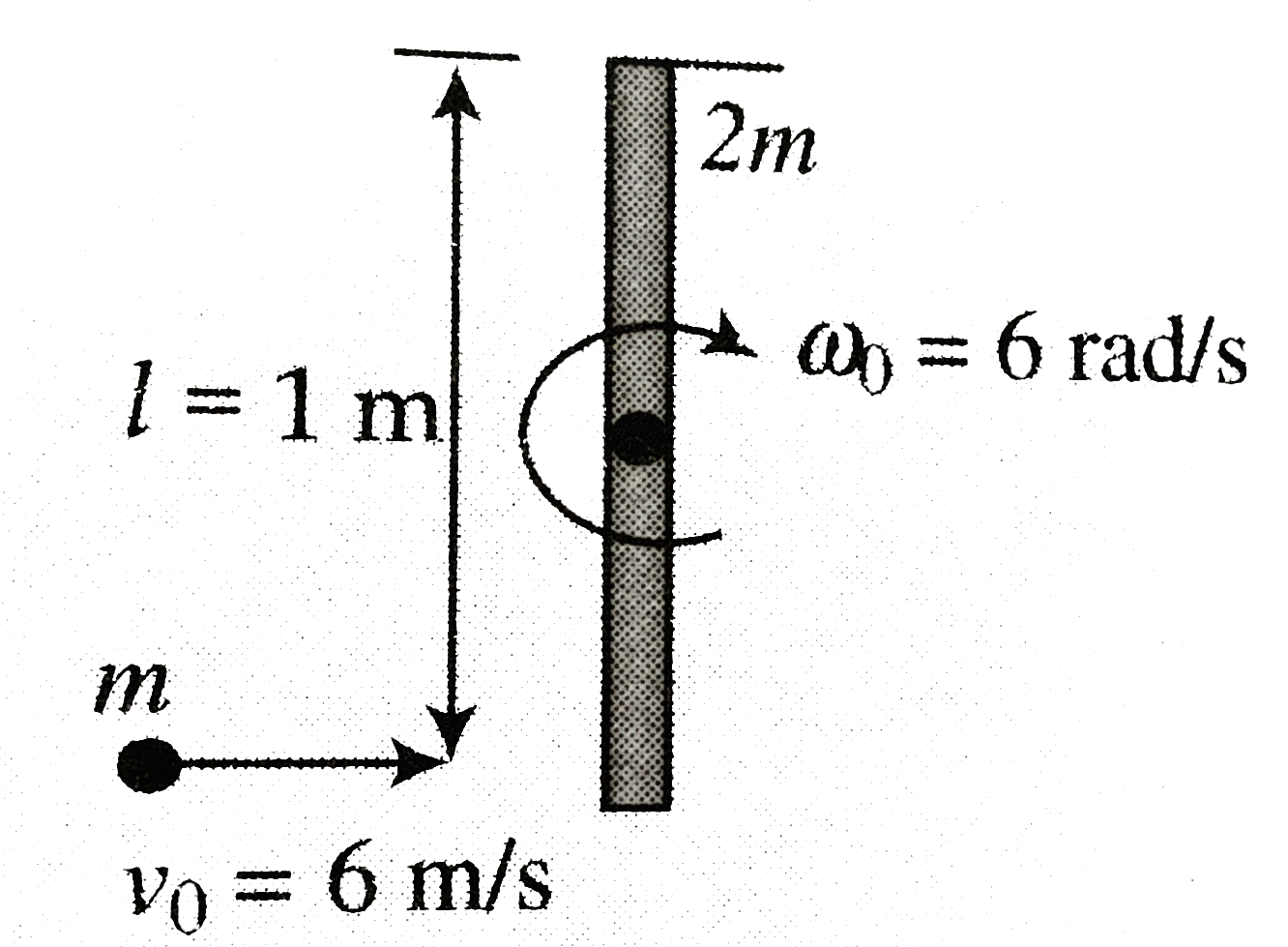
The impulse acting on the rod -bullet system during the impact is shown in figure. J1 is the impulse acting on the rod by the hinge. Here the role of J1 is a little intersecting force. J could be greater than zero J1>0,F1 could be equal to zero, J1=0, and F1 could be less than zero J1<0. And as a consequence the linear momentum of the system may increase, may remain constant or may decrease.
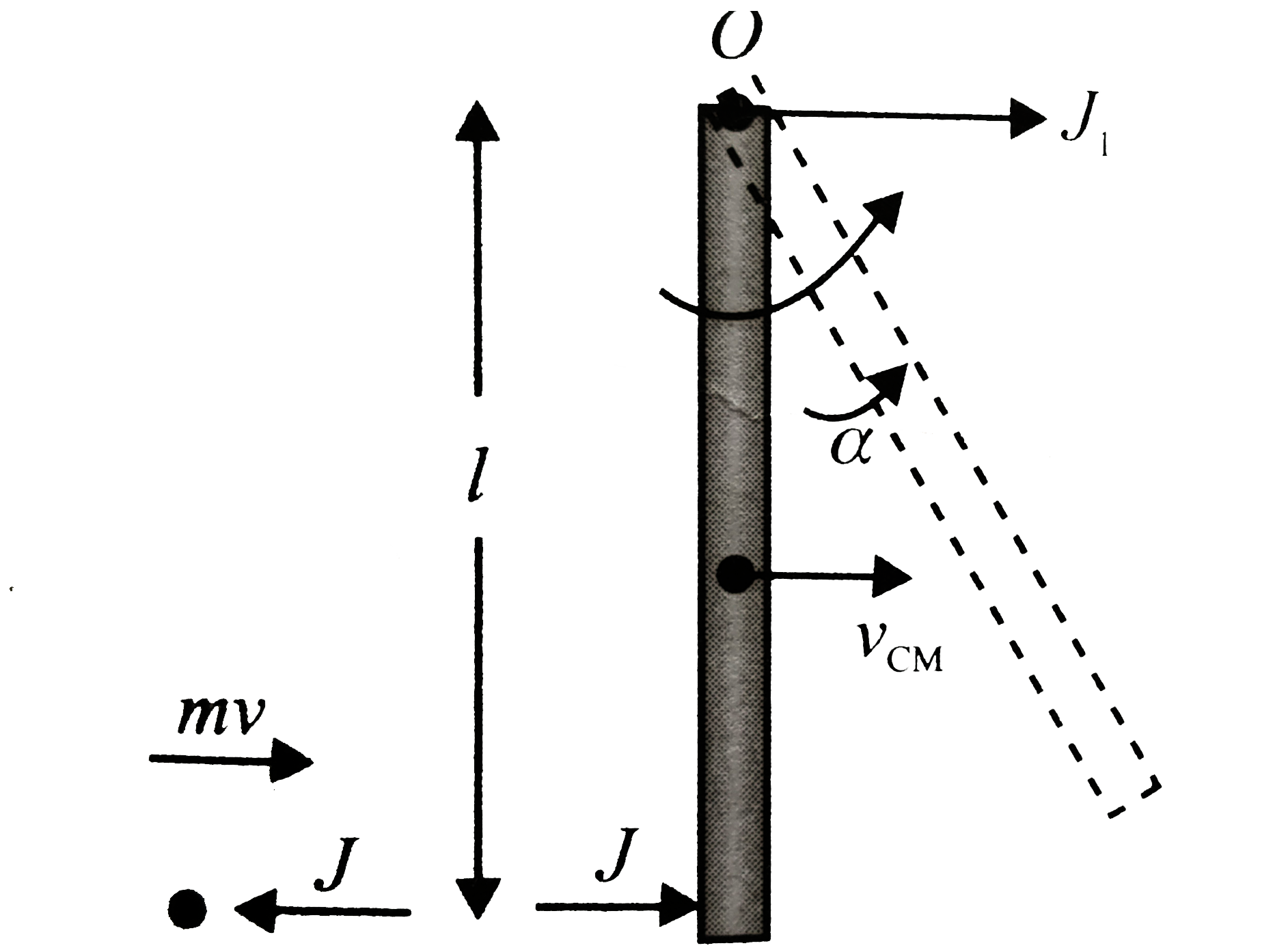
a. During the impact, the moment ofimpulse acting o the rod bullet system ahout the hinge is zero. Angular momentum about the hine will remain constant. Let ω be the angular velocity of the system about the hinge.
[Angular momentum of the system]initial=[Angular momentum of the system]final
⇒mv×l=I0×ω......i
Where I0 is the moment of inertia of the rod bullet system after collision about O
I0=Irod+Ibullet=13Ml2+ml2.....ii
mvl=(13Ml2+ml2)ω..............iii
As the system swings about hinge, the mechanical energy of the system will remain constant △k+△U=0
[12(13Ml2+ml2)ω2−0]
=mgl2(1−cosα)+mg(1−cosα)
From eqn iii ω=3mvl(M+3m)............iv
Substituting this value of ω in eqn v we get
12(13Ml2+ml2)(3mvl(M+3m))2
⇒12×12l2(M+3m)9m2v2l2(M+3m)2
=gl1−cosα2(M+2m)
⇒v2=2gl3(M+2m)(M+3m)m2sin2α2
Now for m<<m,(M+3m)(M+3m)≈M2
Thus v2=23glM2m2sin2α2⇒v=Mm√23glsinα2
b. Change in linear momentum during the impact
⇒△p=pf−pi
={M(l2ω)+m(lω)}−mv
=kl(M+2m2)ω−mv.........v
From eqn iv and i
=l(M+2m2)3mvl(M+3m)−mv
=32mv−mv=12mv
=12mMm√12glsinα2
=M√16glsinα2
what causes linear momentum to change? Obviously, impulse J1 at hinge. Here △p is positive, linear momentum increase so J1 must be towards the right.
Topper's Solved these Questions
- BOOK - CENGAGE PHYSICSCHAPTER - RIGID BODY DYNAMICS 2EXERCISE - Solved Examples12videos
RIGID BODY DYNAMICS 2
- BOOK - CENGAGE PHYSICSCHAPTER - RIGID BODY DYNAMICS 2EXERCISE - Exercise 3.111videos
RIGID BODY DYNAMICS 2
- BOOK - CENGAGE PHYSICSCHAPTER - RIGID BODY DYNAMICS 1EXERCISE - Integer11videos
RIGID BODY DYNAMICS 1
- BOOK - CENGAGE PHYSICSCHAPTER - SOUND WAVES AND DOPPLER EFFECTEXERCISE - Integer16videos
SOUND WAVES AND DOPPLER EFFECT
Similar Questions
A vertically oriented uniform rod of mass M and length l can rotate about its upper end. A horizontally flying bullet of mass m strikes the lower end of the rod and gets stuck in it, as a result, the rod swings through an angle α. Assuming that m<<M, find:
(a) the velocity of the flying bullet,
(b) the momentum increment in the system "bullet-rod" during the impact, what causes the change of that momentum,
(c) at what distance x from the upper end of the rod the bullet must strike for the momentum of the system "bullet-rod" to remain constant during the impact.View SolutionA horizontally flying bullet of mass m gets stuck in a body of mass M suspended by two identical threads of length l (figure).
As a result, the threads swerve through an angle θ. Assuming m<<M, find:
(a) the velocity of the bullet before striking the body,
(b) the fraction of the bullet's initial kinetic energy that turned into heat.
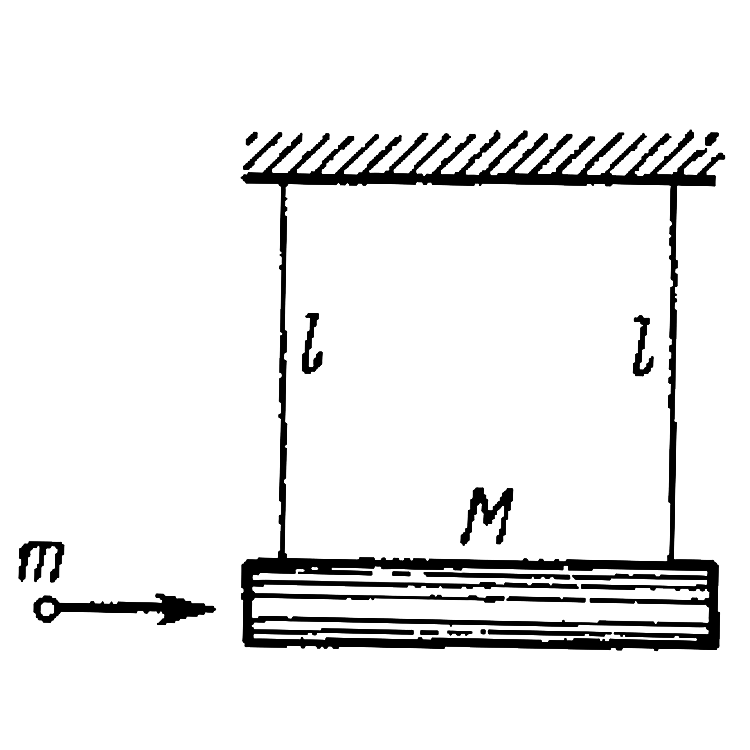 View Solution
View Solution
Knowledge Check
- Question 1 - Select One
A uniform rod of mass m and length l makes a constant angle θ with an axis of rotation which passes through one end of the rod. Its moment of inertia about this axis is
Aml23Bml23sinθCml23sin2θDml23cos2θ - Question 2 - Select One
The moment of inertia of a thin uniform rod of mass M and length l about an axis perpendicular to the rod through its centre is I. The moment of inertia of the rod through its end point is
AI4BI2C2ID4I - Question 3 - Select One
A uniform rod of mass m and length l rotates in a horizontal plane with an angular velocity ω about a vertical axis passing through one end. The tension in the rod at a distance x from the axis is
A12mω2xB12mω2(1−x2l)C12mω2l(1−x2l2)D12mω2l[1−xl]
A rod of mass m and length l hinged at the centre is placed on a horizontal surface. A bullet of mass m moving with velocity v strikes the end. A of the rod and gets embedded in it. The angular velocity with which the systems rotates about its centre of mass after the bullet strikes the rod
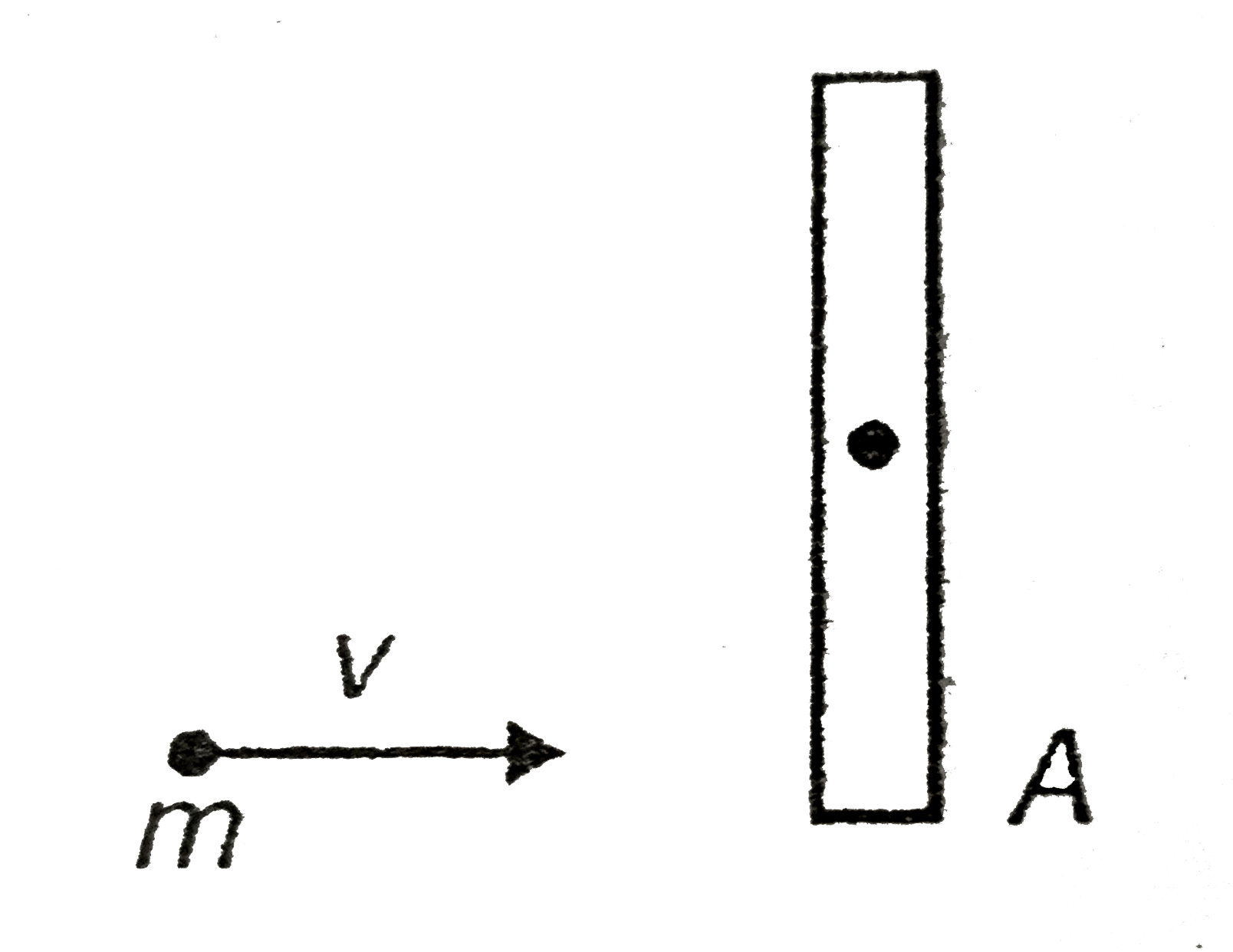 View Solution
View SolutionA rod of mass m and length l hinged at the centre is placed on a horizontal surface. A bullet of mass m moving with velocity v strikes the end A of the rod and gets embedded in it. The angular velocity with which the systems rotates about its centre of mass after the bullet strikes the rod
 View Solution
View SolutionA uniform rod of mass m and length l rotates in a horizontal plane with an angular velocity ω about a vertical axis passing through one end. The tension in the rod at a distance x from the axis is
View SolutionA uniform rod of mass m and length l is pivoted smoothly at O. A horizontal force acts at the bottom of the rod.
a. Find the angular velocity of the rod as the function of angle of rotation θ.
b.What is the maximum angular displacement of the rod?
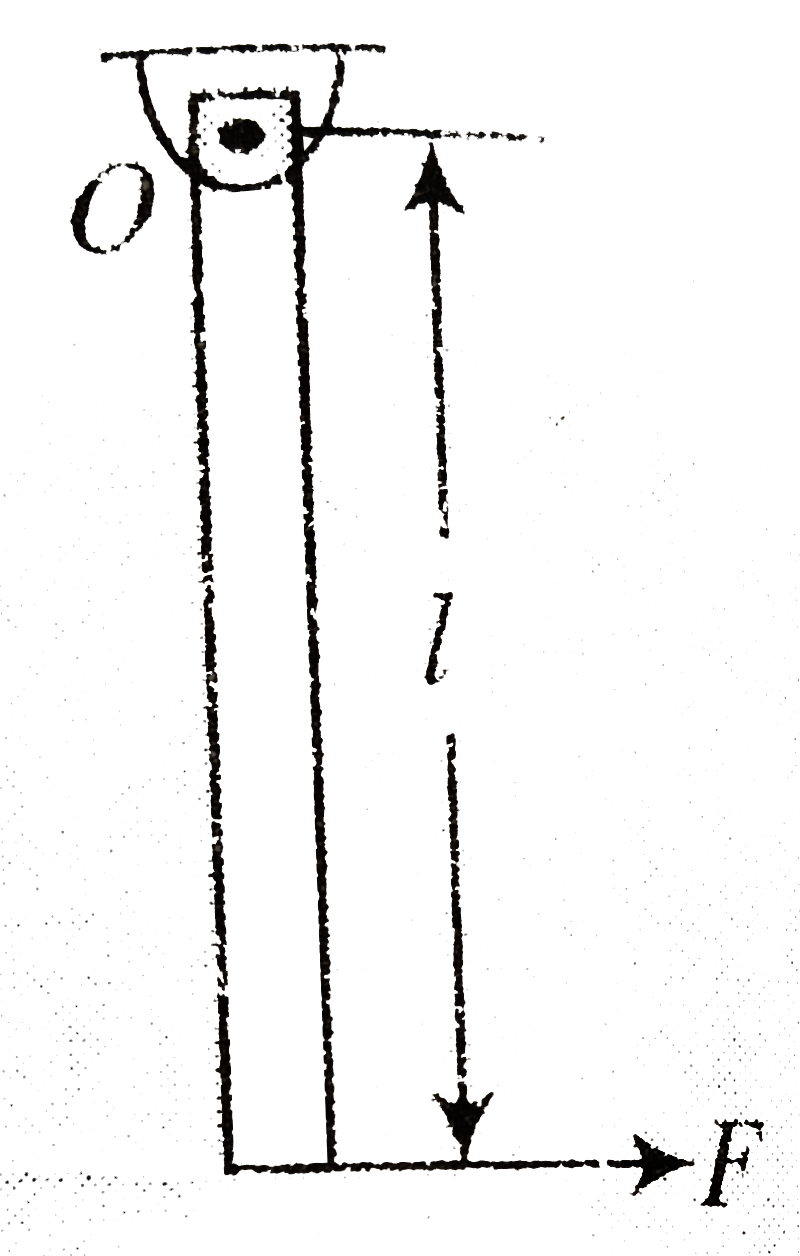 View Solution
View SolutionA uniform rod of mass M is hinged at its upper end. A particle of mass m moving horizontally strikes the rod at its mid point elastically. If the particle comes to rest after collision find the value of M/m?
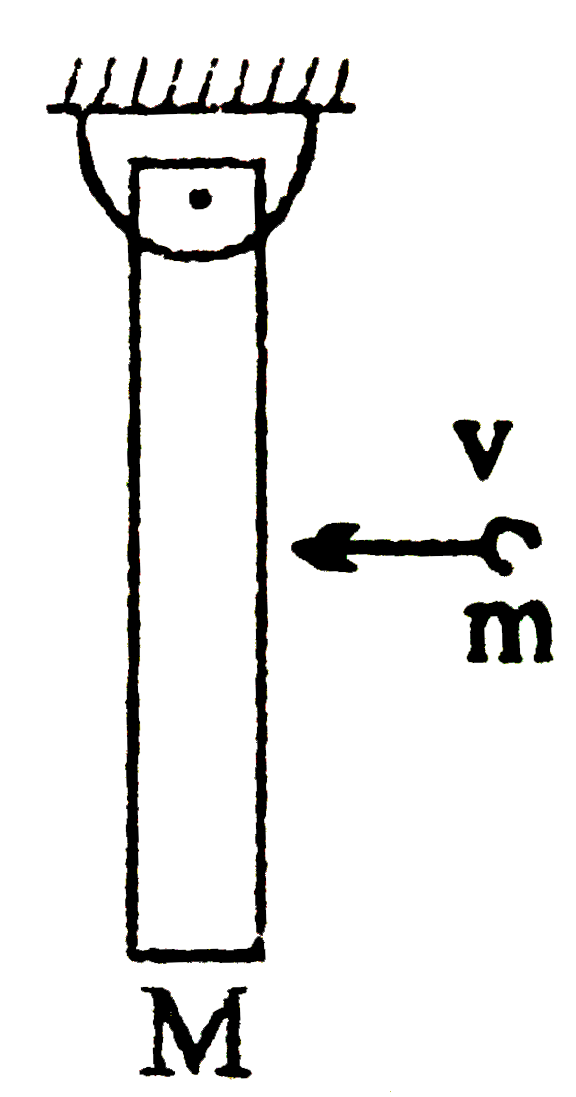 View Solution
View Solution

